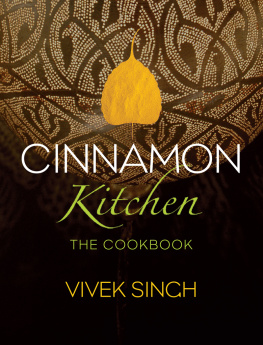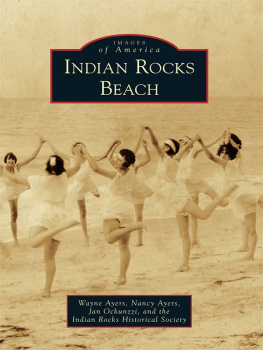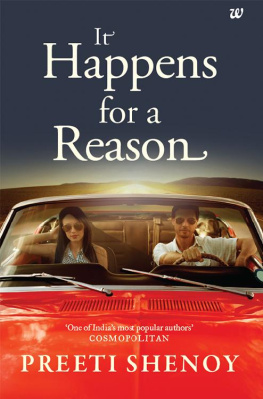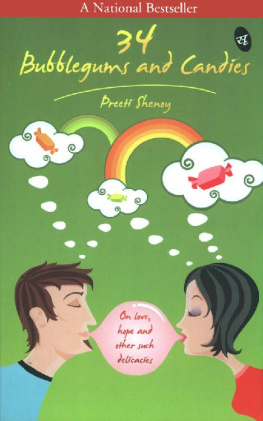Hachette Book Group supports the right to free expression and the value of copyright. The purpose of copyright is to encourage writers and artists to produce the creative works that enrich our culture.
The scanning, uploading, and distribution of this book without permission is a theft of the authors intellectual property. If you would like permission to use material from the book (other than for review purposes), please contact permissions@hbgusa.com. Thank you for your support of the authors rights.
Published by Running Press, an imprint of Perseus Books, LLC, a subsidiary of Hachette Book Group, Inc.
The Hachette Speakers Bureau provides a wide range of authors for speaking events. To find out more, go to www.hachettespeakersbureau.com or call (866) 376-6591.
The publisher is not responsible for websites (or their content) that are not owned by the publisher.
Archival photographs courtesy of Lisa Bach, the Mistry family, and Jilchristina Vest.
I thought I was going to start out with a food truck. But back in 2010 Ann, my then-girlfriend and now-wife, kept nudging me to do a pop-up at the slightly sketchy liquor store across the street from our South of Market loft in San Francisco. Its the sort of place youd drive right by without giving it a thought. The Garage Caf, as its known, was where I went for beer, snacks, scratchers, and emergency milk for the six years we lived in the neighborhood.
It had a kitchen hood, which clears grease, smoke, and heat above a cooktop. That was about all the store had to recommend it. But it was an important detail. You need a hood to deep-fry; you cant cook Indian street food without deep-frying. Thats Juhu Beach Club: Its the hot dogs and funnel cakes of Indian cuisine.
Still, Im a chef whos cooked in fine dining and corporate food service. So the idea of this disorganized, filthy space selling convenience foods my first inclination was to turn my nose up at it. But I didnt. Instead, I approached the owner, he was open to the idea, and we figured out an informal agreement about what hours we could open and what equipment we could use.
We spent days cleaning. I worked on a menu. We had no idea if people would come. Though not wholly positive, the Top Chef TV exposure from the year before helped: Who is this woman and can she cook? People were curious: they came, they ate, they wrote about it.
But the first day, before we opened for business, I was totally scared. I felt a lump in my throat. My mom told me to pray. I dont pray. But the first morning of the pop-up I brought in a small statue of Ganesh and prayed. A friends son gave me a little green plastic toy for good luck. I kept it in my pocket every day back then.
I felt like this was my one chance. I could not fuck it up.
I made sandwiches, samosas, and a lassi to start with. I was doing something different, flavor profilewise; it wasnt your typical Indian food.
People liked the pop-up. They really liked it. I made just three sandwiches at first: a spicy, veggie sloppy joe; a grilled green chile chicken with tangy turmeric slaw; and a smoky black cardamom braised short rib with a cucumber raita. I served them on Acme torpedo buns. They were both familiar fare and a flavor adventure. I sold samosas I rolled by hand and my kind of lassi: a little sweet, a bit salty, the kind an adult would enjoy.
Word started to spread on Twitter and elsewhere in social media. By the end of six months we were cramming more people into that liquor store than I ever imagined possible, and the menu was a page long. I had developed a loyal following.
Now I needed a place of my own.
I had some false starts. First, I tried to find a home for a restaurant with an investment partner in San Franciscos Mission District. Its a long story: there were permitting issues, budgetary constraints, and contract disputestoo many points of contention. I didnt want to walk away, but I had to. So the deal fell through. It was such a bummer: It was an amazing space, a corner spot with high ceilings. That left me without a financial backer and without a space to call my own in San Francisco.
It happens a lot in this industry. But when it happens to youout of the blueits a major blow. Id been telling everyone I was about to open a restaurant in the city. Then it became clear that wasnt going to happen. San Francisco is a very expensive place to try to launch a first-time restaurant when you dont have access to a lot of capital.
It felt like another kick in the teeth. I had thought my dreams were going to come true. Everywhere I turned there were roadblocks. I cried. Id failedagain. What was I going to do now?
It all ended up working out. Ann and I pooled our savings, and with financial help from my parents, we had enough money to secure a lease on an existing restaurant in Oakland. Juhu Beach Club is now in its fourth year in its humble home in a little strip mall behind a check-cashing outlet and a pawnshop. Ann and I found our home in Oakland as well; its a good fit for us.
This is my storyfailing up and being true to myselfevery step of the way. Its Juhu Beach Clubs story too: Indian spice and Oakland soul.

T he recipes in this cookbook are arranged in an intentionally eclectic fashion. For instance, recipes arent listed by the season, menu, dish type, part of the day, ingredients, timeline chronology, or other traditional cookbook conventions.
The recipes are grouped around the stories and anecdotes that precede them and reflect the theme of a chapter, be it street eats, comfort food, Oakland, farm fresh, signature dishes, or so-called authentic cooking. My personal journey and my cooking career, those two things are pretty much tied together these days. Its tough, maybe even impossible, to tease them apart.
There is some logic to this unorthodox approach: All the building-block recipes are in one place, at the beginning of the book. The masalas or spice blends that show up in almost all the recipes in these pages are grouped in one chapter, as are all the restaurants signature slider sandwiches, known as



















